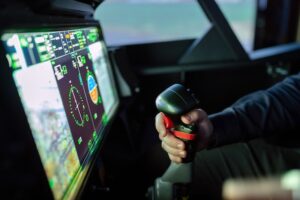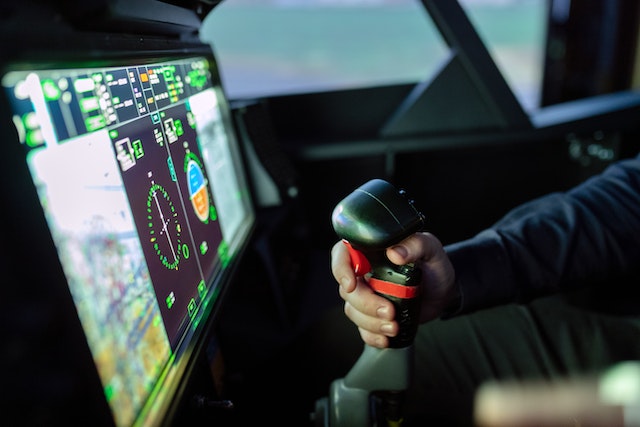In the world of aviation, precision and accuracy are paramount. Aircraft rely on a multitude of instruments and systems to navigate the skies safely and efficiently. Among these critical systems is air data testing, a process that ensures the accuracy of an aircraft’s airspeed, altitude, and other essential data. In this article, you will explore the indispensable role of air data testing in aviation, its significance in maintaining flight safety, and the technology behind this vital process.

The Basics of Air Data Testing
Air data testing, often referred to as pitot-static testing, is a comprehensive evaluation of an aircraft’s air data system facilitated by specialized equipment known as air data test sets. This system comprises a network of sensors, including pitot tubes and static ports, that collect vital information about the aircraft’s flight conditions. These sensors measure parameters such as airspeed, altitude, vertical speed, and angle of attack, all of which are crucial for safe and efficient flight.
The primary components of an air data system include:
- Pitot Tubes: These forward-facing tubes capture the dynamic pressure of the oncoming air, providing critical data on airspeed.
- Static Ports: Located on the sides of the aircraft, static ports capture static pressure, which is crucial for altitude and vertical speed calculations.
- The angle of Attack Sensors: These sensors monitor the angle at which the aircraft encounters the air, providing data on the aircraft’s attitude and stability.
The Significance of Air Data Testing
The accuracy of air data is paramount for flight safety. Incorrect airspeed or altitude readings can lead to pilot confusion and potentially dangerous situations. Regular air data testing ensures that the instruments provide reliable information, reducing the risk of accidents caused by incorrect data. Accurate air data is also essential for flight efficiency. Pilots rely on precise information to make decisions about fuel consumption, optimal altitudes, and route planning. Properly calibrated air data systems contribute to fuel savings and efficient flight operations. Aviation authorities and regulations mandate regular air data testing to ensure that aircraft comply with safety standards. Failure to adhere to these requirements can result in grounding an aircraft until the necessary testing and calibrations are completed.
The Air Data Testing Process
The air data testing process is a comprehensive sequence of meticulously executed steps. It commences with calibration, where testing equipment is fine-tuned to ensure precision by comparing its readings to established reference values. Static pressure testing is another crucial element of the process, where static pressure ports are rigorously evaluated to ensure their accuracy in measuring atmospheric pressure. Pitot-static testing is equally vital, focusing on the verification of pitot tubes and associated instruments to confirm their accuracy in measuring critical flight parameters, including airspeed, altitude, and vertical speed. In addition, angle of attack sensors undergo a meticulous evaluation to guarantee that they consistently provide precise information regarding the aircraft’s attitude and stability. This step ensures that pilots have reliable data for safe and controlled flight. The final phase of the air data testing process involves data analysis.
Advanced Technology in Air Data Testing
Advanced technology has significantly enhanced air data testing, making it a more precise and efficient process. These innovations include the adoption of digital sensors in modern aircraft, which provide superior accuracy and reliability compared to older analog systems. Remote monitoring of air data systems enables real-time data analysis during flight, allowing for immediate corrective action when discrepancies are detected. High-precision calibration equipment is employed to fine-tune air data systems, ensuring they provide accurate readings. Additionally, the automation of testing procedures has streamlined the process, reducing the potential for human error and expediting the overall evaluation. These technological advancements underscore the aviation industry’s commitment to maintaining the highest standards of precision and safety in air data testing.
Conclusion
In the dynamic world of aviation, precision and safety are paramount. Air data testing, or pitot-static testing, plays a crucial role in ensuring the accuracy of an aircraft’s airspeed, altitude, and other essential data. This process is not only vital for flight safety but also for operational efficiency and regulatory compliance. As technology continues to advance, air data testing becomes more precise and efficient, contributing to the overall safety and reliability of aviation. Whether through digital sensors, remote monitoring, or automated testing procedures, the aviation industry continually strives to enhance the accuracy of air data systems, thereby ensuring that aircraft navigate the skies with the utmost precision and reliability. Air data testing stands as a testament to the industry’s commitment to safety and excellence in aviation.
Author Profile

If You have any query then email Us. dailylist88@gmail.com
Latest entries
 Delhi20 October 2024Top 7 Best Professional Makeup Artist Course in Delhi NCR
Delhi20 October 2024Top 7 Best Professional Makeup Artist Course in Delhi NCR How to12 September 2024How Are Modern Generative AI Systems Improving User Interaction?
How to12 September 2024How Are Modern Generative AI Systems Improving User Interaction? Business10 September 2024The Future of Real Estate: Is Now the Right Time to Buy or Sell?
Business10 September 2024The Future of Real Estate: Is Now the Right Time to Buy or Sell? Blog8 September 2024Which are the Best Astrology Websites for a Free Online Birth Chart?
Blog8 September 2024Which are the Best Astrology Websites for a Free Online Birth Chart?






